Inti Raymi 2023
The Inca is carried into the plaza.
I love Inti Raymi. I love the costumes and the pageantry.
I love the dancing and how each group has its own choreography. I love the drums, flutes and conch shells blown as horns. I love the people watching – most of the crowd is from Cusco or nearby towns and villages. I love listening to parents and grandparents translating the Quechua lyrics and lines to their children and scolding the kids for not trying harder to learn Quechua.
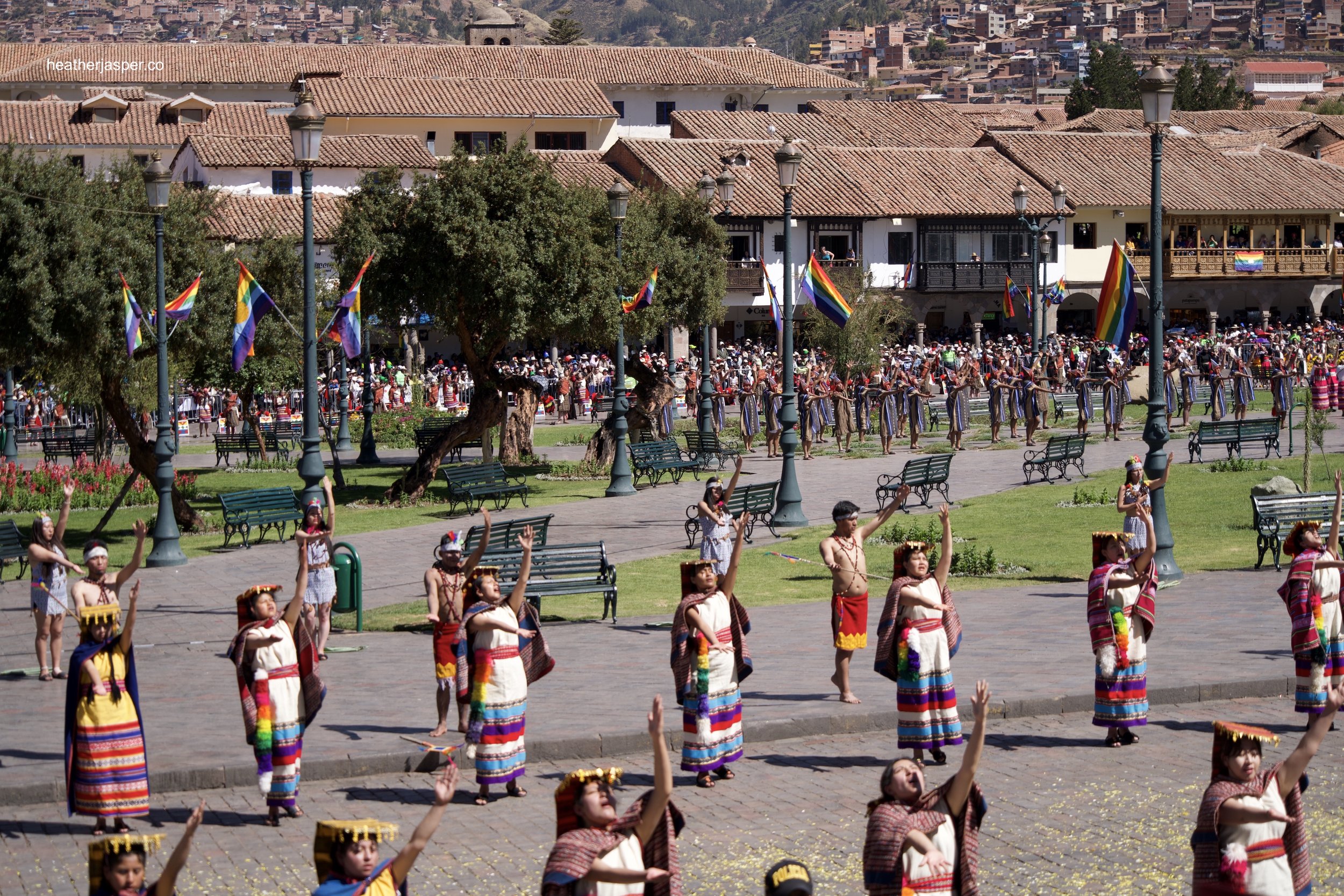
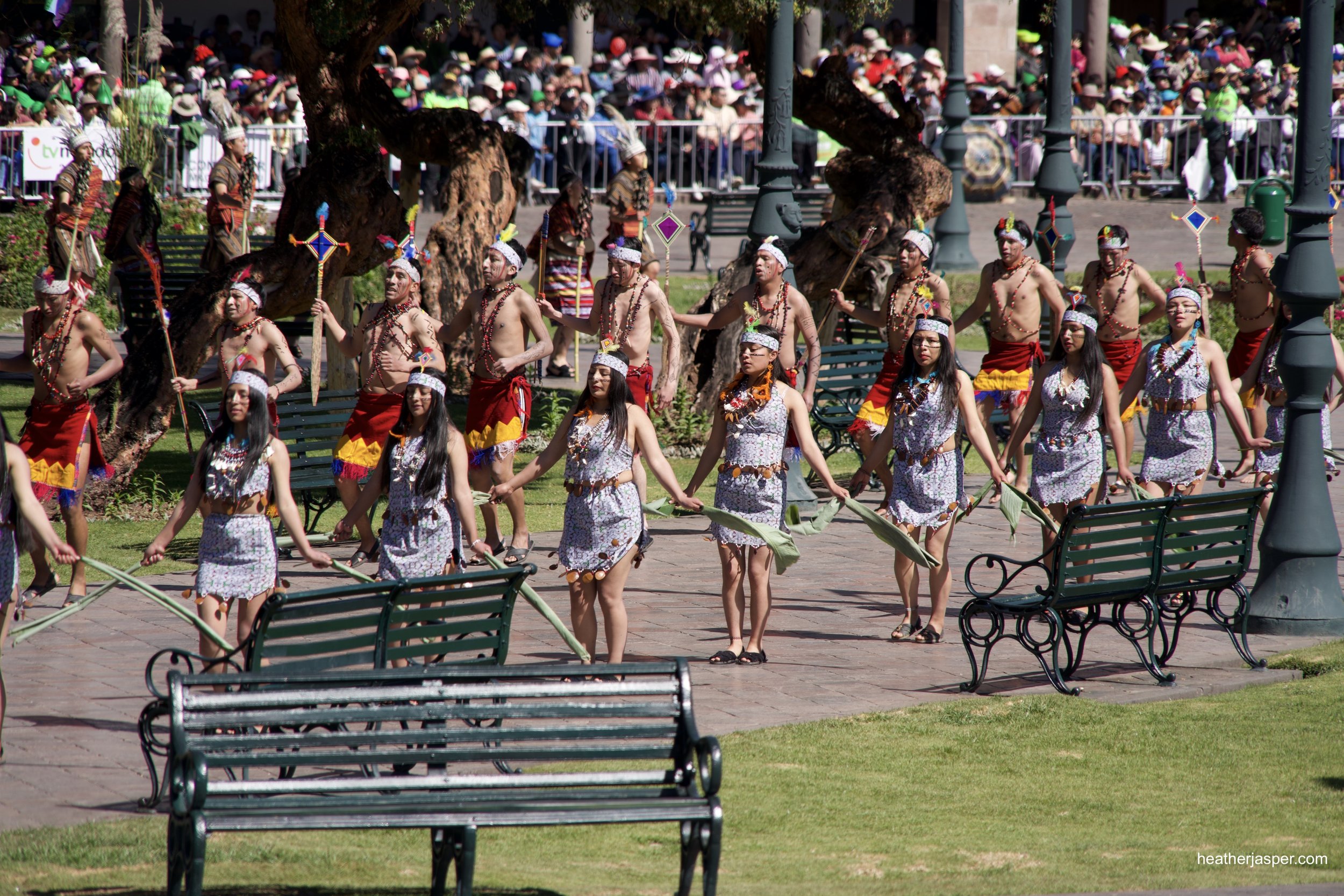
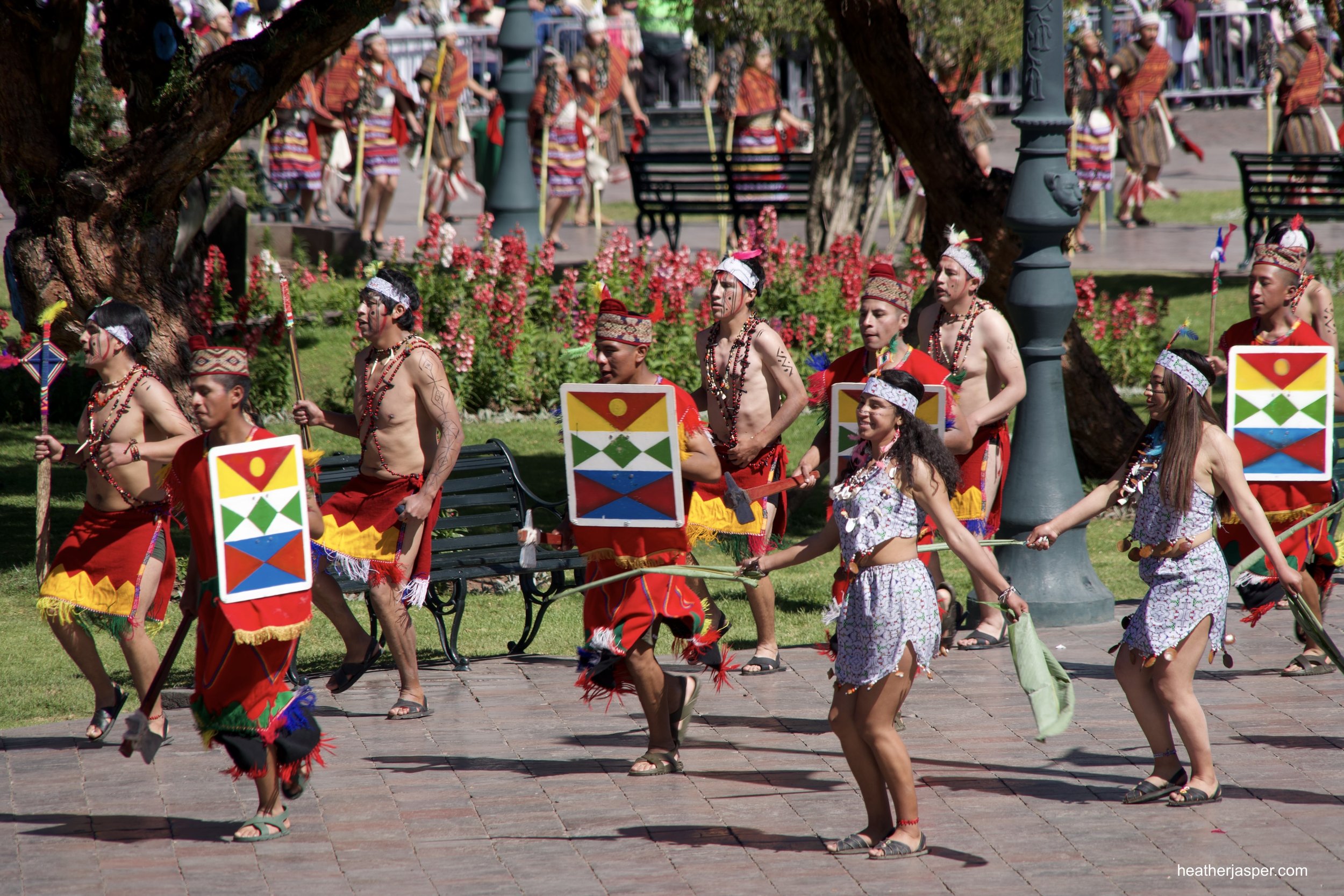
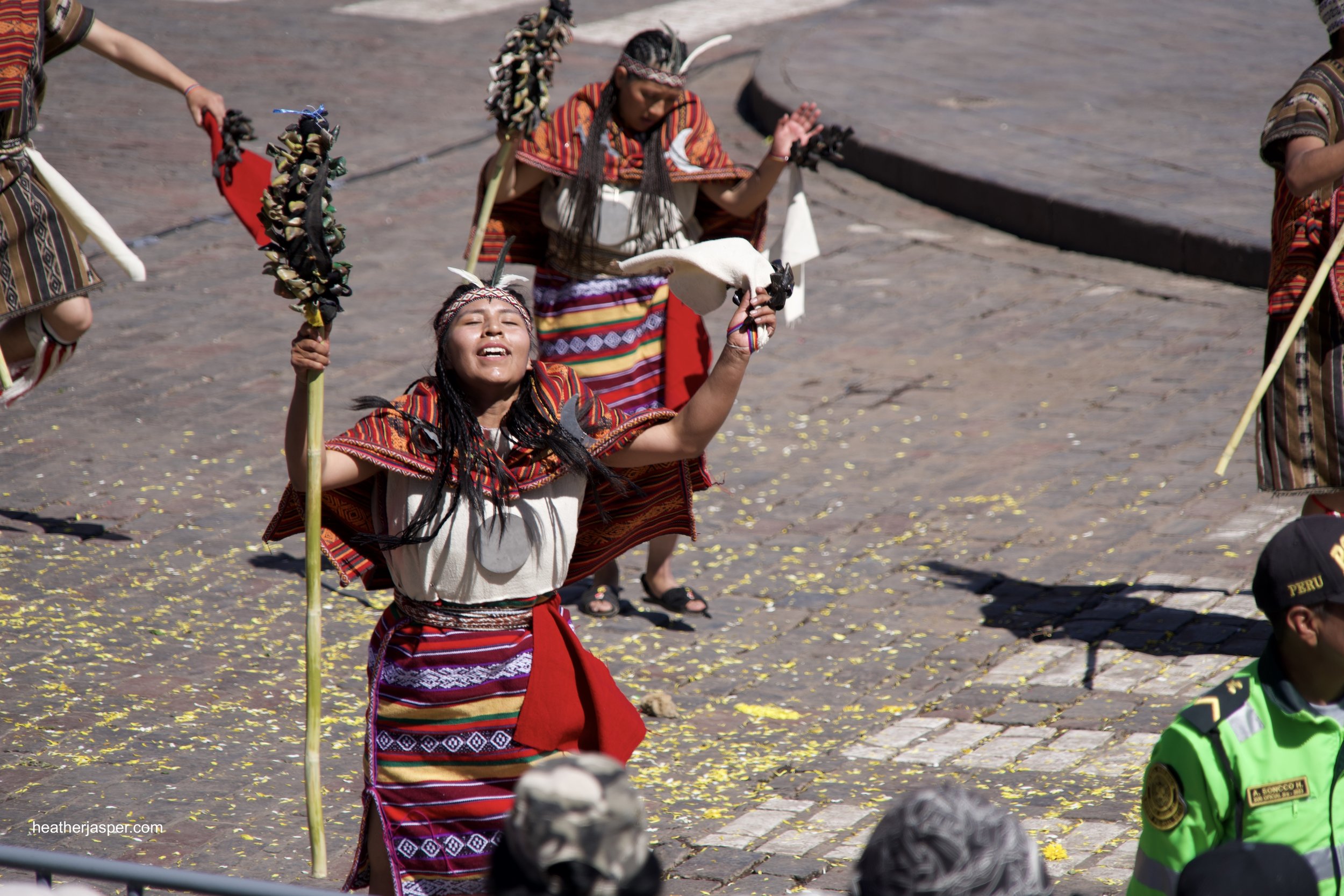

Inti Raymi is an all-day musical extravaganza.
You’ll see hundreds of people dressed in traditional costumes, singing, dancing, and playing flutes and drums. The main characters are the Inca and the Qoya, the Inca’s wife, and leaders representing the tribes controlled by the Inca. They have memorized lines in Quechua and microphones so the thousands of spectators can hear them.
I don’t understand more than a few words of Quechua, so I bought an Inti Raymi booklet from a passing vendor. The booklet has the history of Cusco and the history of how today’s modern Inti Raymi was created in 1944. A group of intellectuals and artists worked together to create a piece of theater to present some Inca traditions to Cusco’s population. The booklet also has descriptions of the event at the three main stages and Spanish translations of the main characters’ lines.
When the Inca ruled Cusco, the center of their city, surrounded by palaces and temples, was called Haukaypata.
The Quechua name means “the place of the warrior.” When the Spanish destroyed the temples in the 1500s to build churches in their places, they kept the central square and renamed it the Plaza de Armas. The second part of Inti Raymi takes place at Haukaypata.
In 2022, I started the day at the Qoricancha, where the celebration begins. The event doesn’t start until about 9am but the crowds are so intense that I knew to get there by 6:30 to get a spot where I could see. Each of the three main stages have bleachers set up for those who want to pay for a ticket. If I only had one shot at seeing Inti Raymi, I would buy a ticket. However, I go to Inti Raymi every year. If I can’t quite see very well one year, I figure out a better spot to sit the following year.
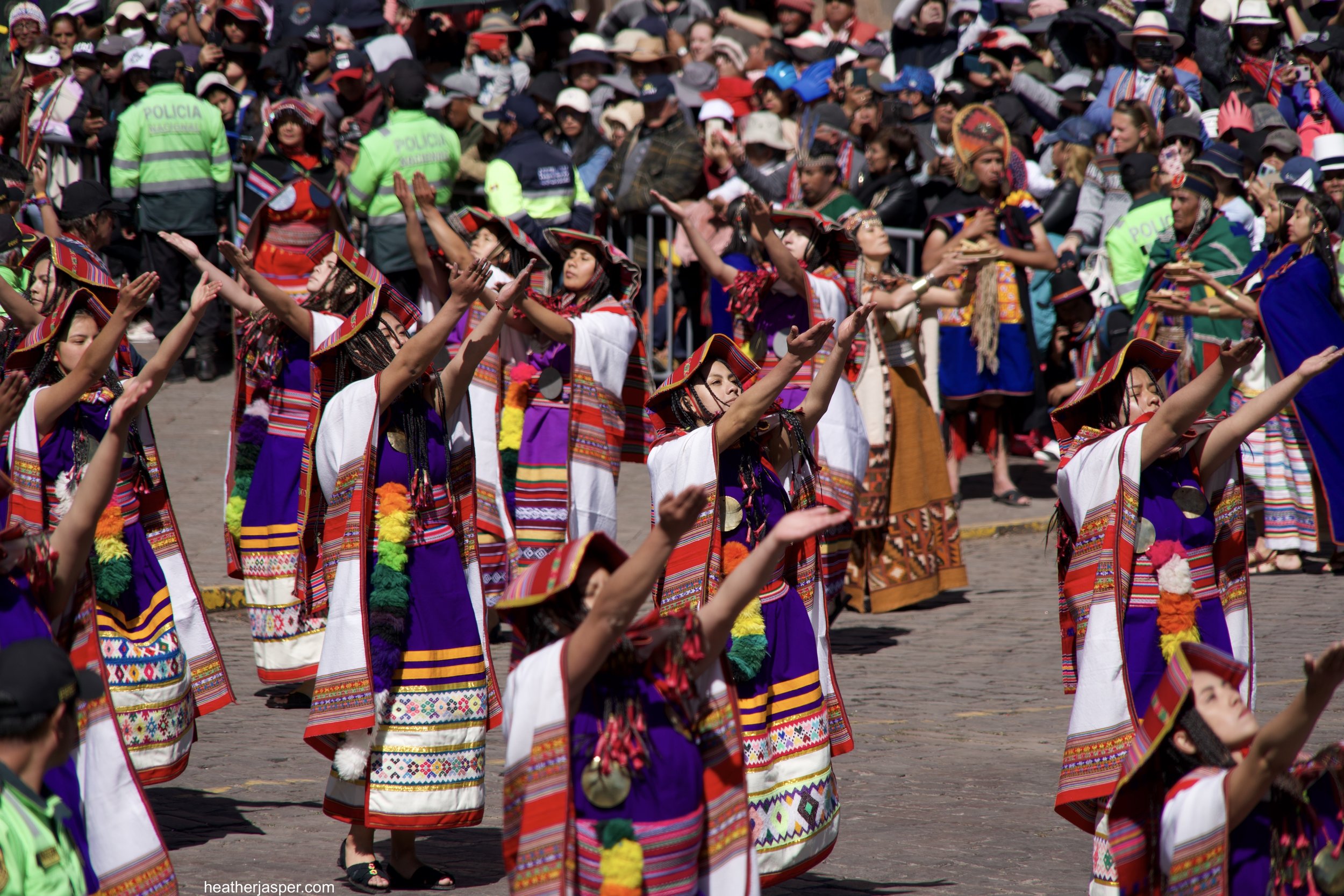
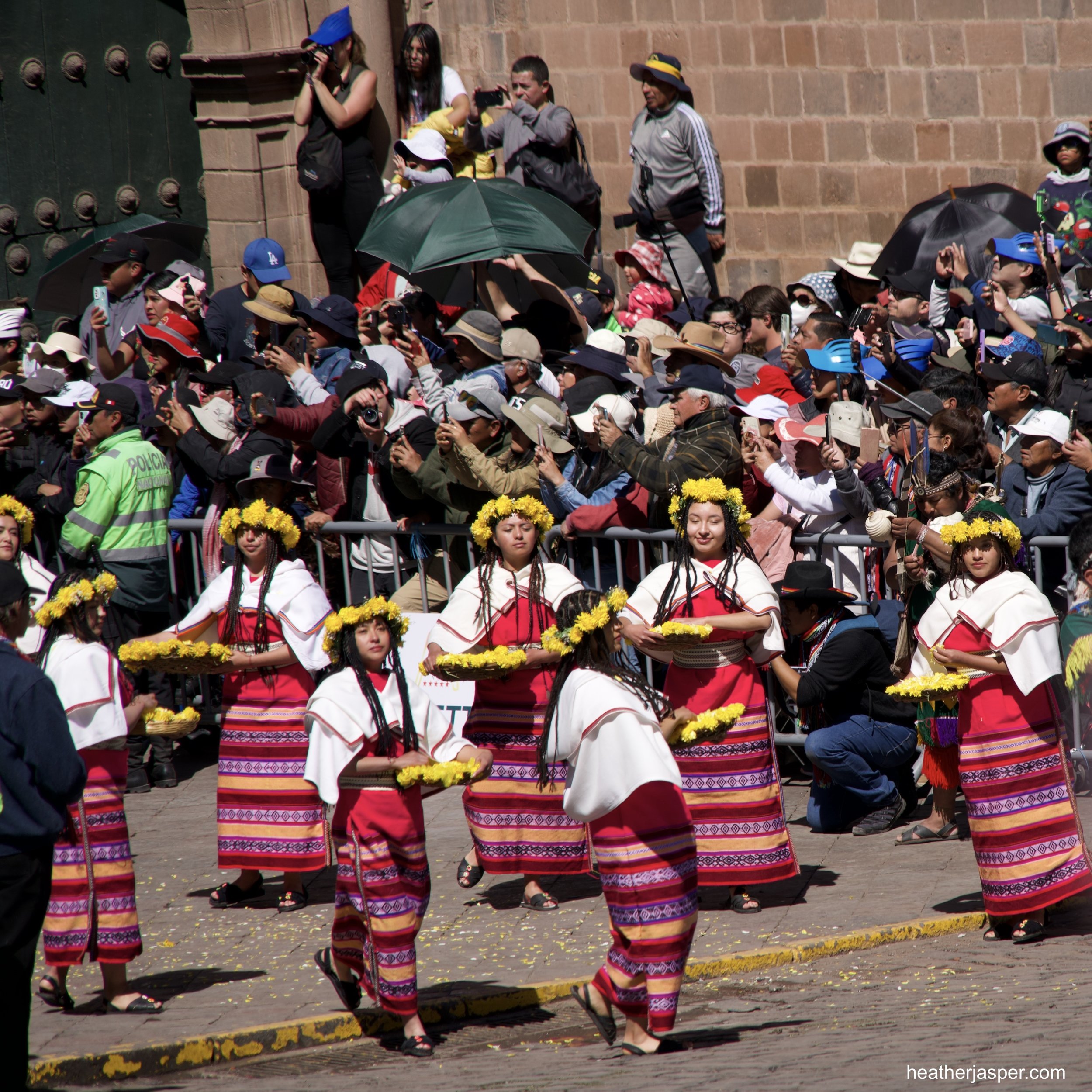
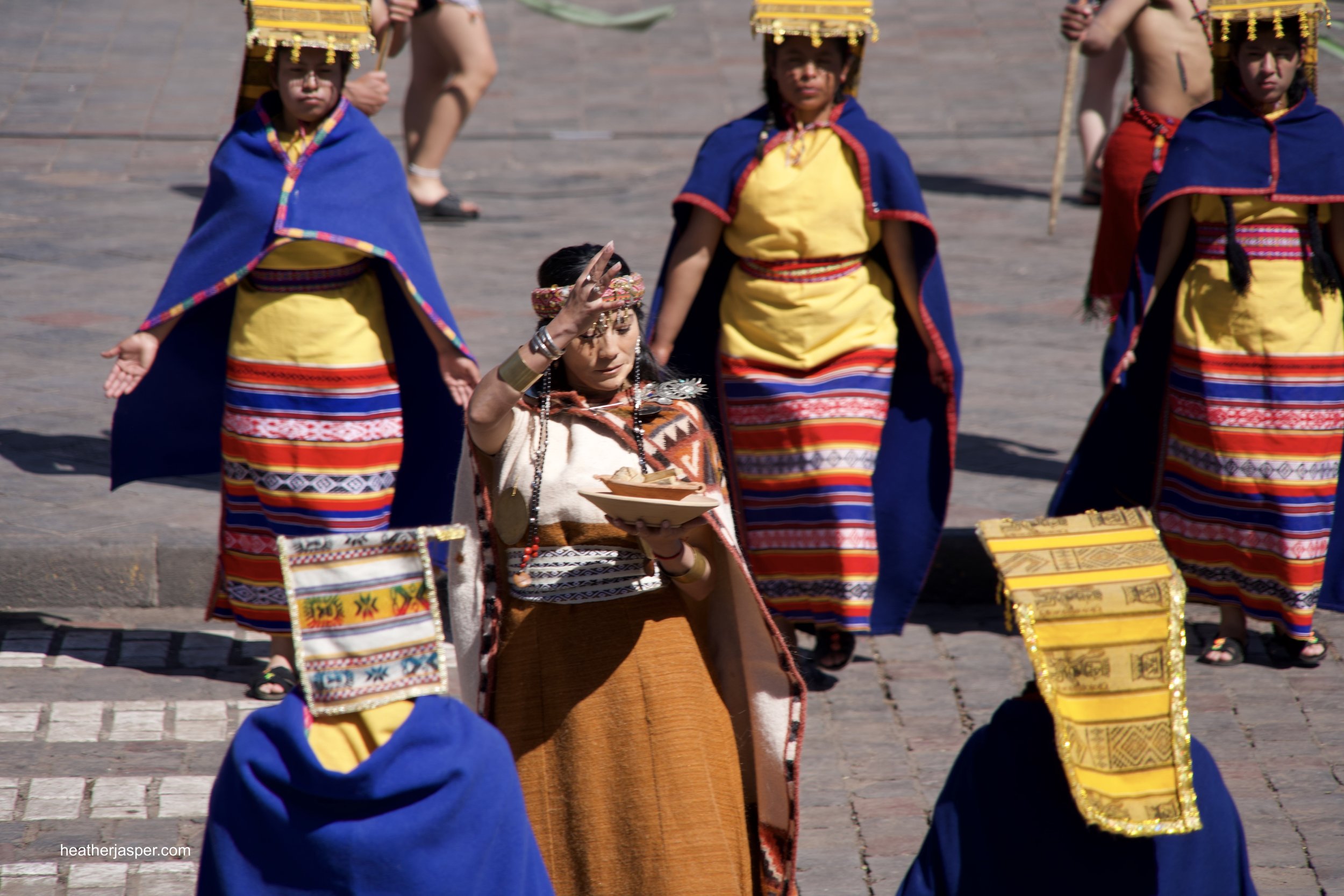

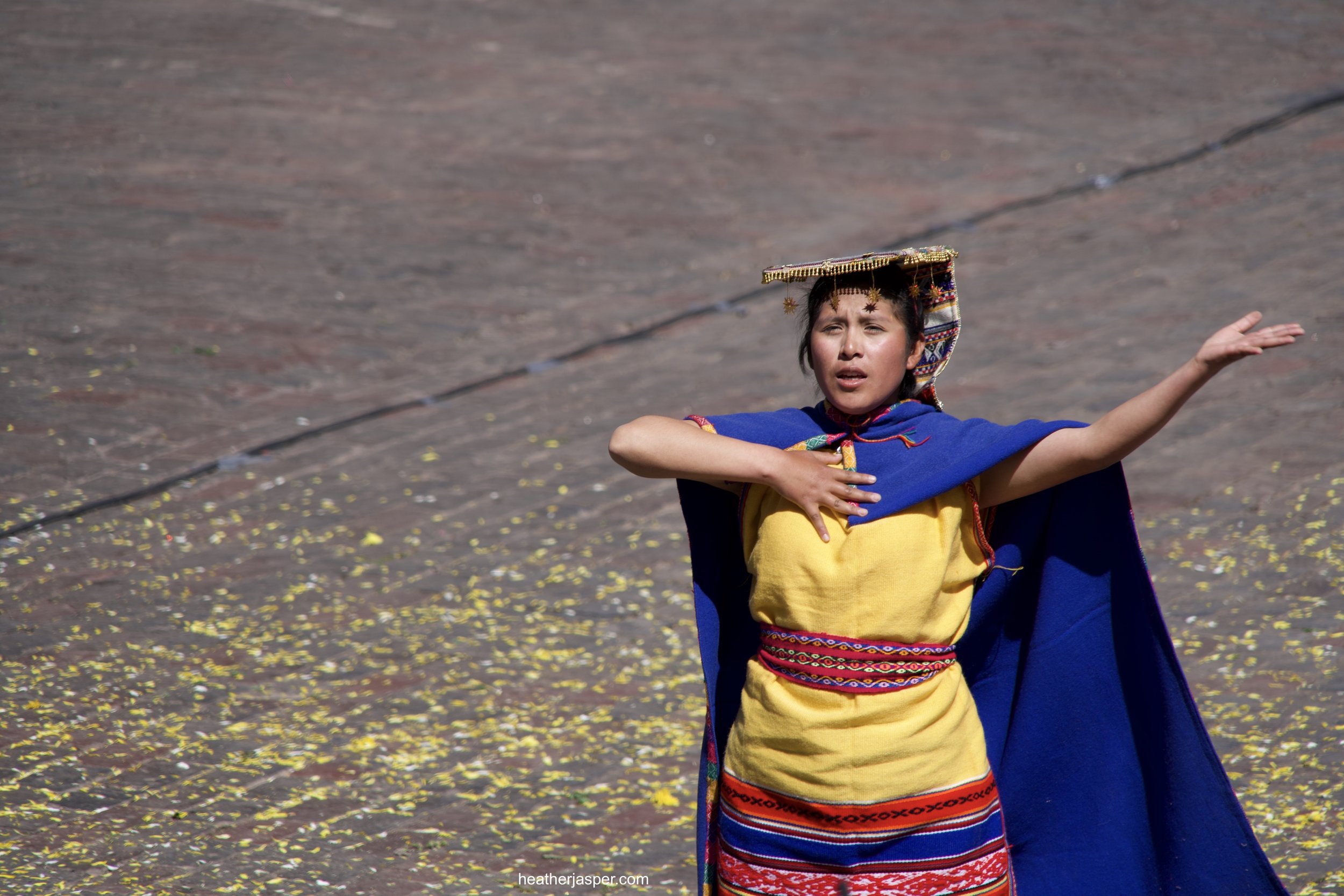
After the early morning and crush at the Qoricancha in 2022, I went home for breakfast and a bit of a rest. Then I hiked up to Sacsayhuaman so I could get a good spot up there for when the third part of the event starts at about 2pm. I didn’t even try to go to the Plaza de Armas.
I made up for it in 2023. I went prepared with a small folding chair and got to the plaza more than three hours before the Inca and all the other actors were scheduled to arrive. Even getting there that early, I barely got the spot I wanted. I set my chair on the top step of the cathedral stairs, on the corner across from where the dancers would enter the plaza. (I was the only spectator in the plaza in 2021, which you can read about on this blog).
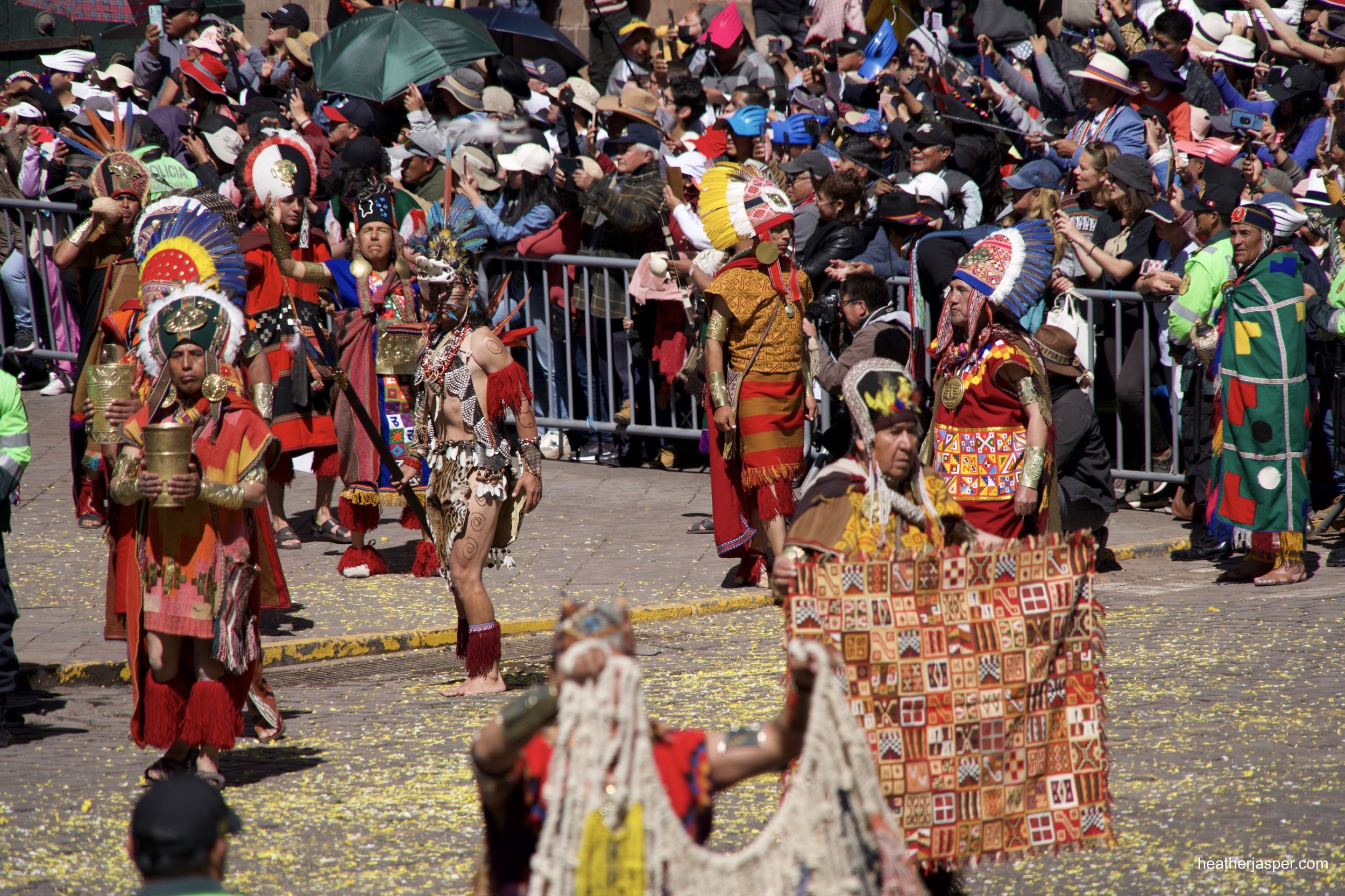
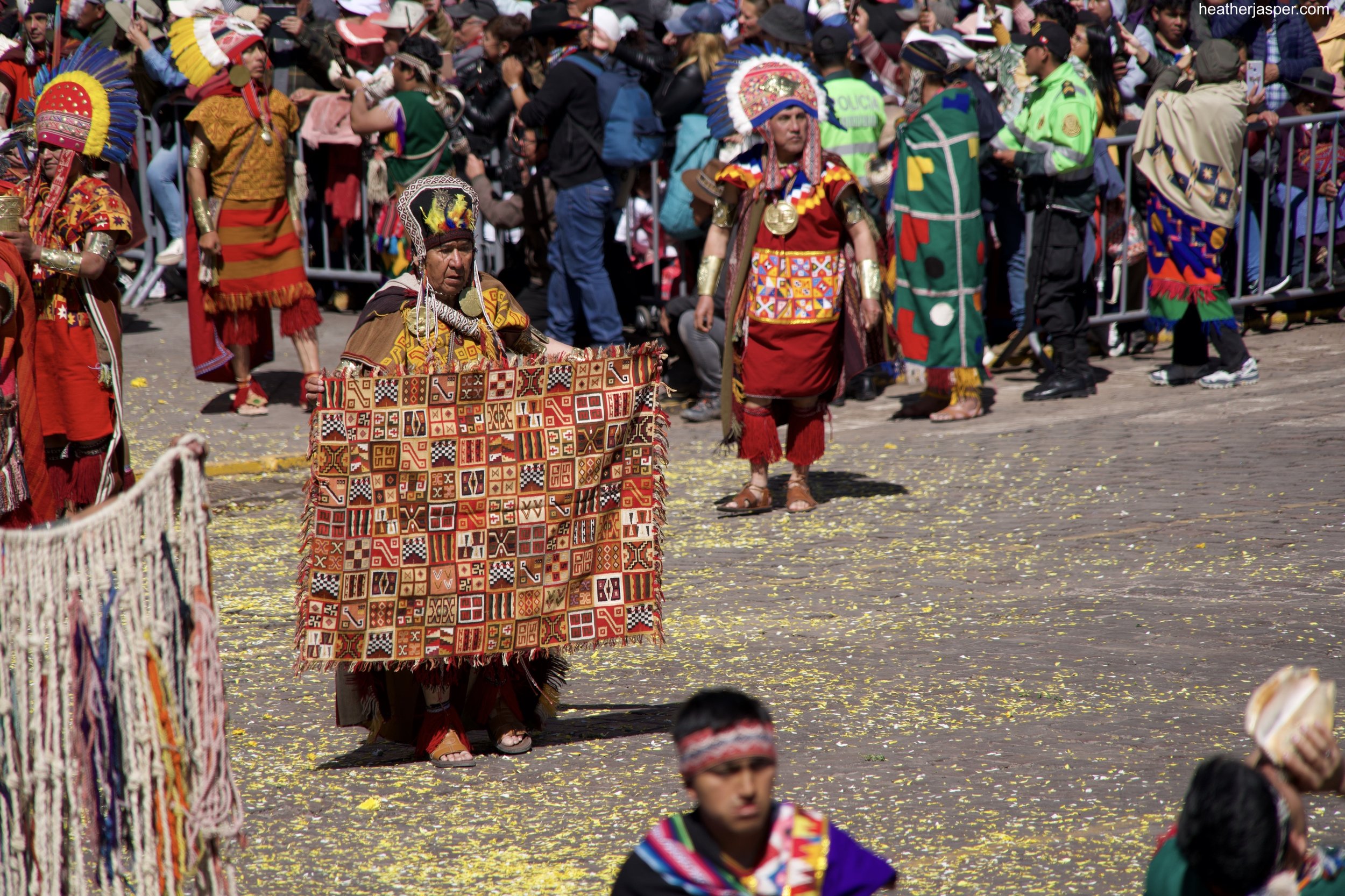
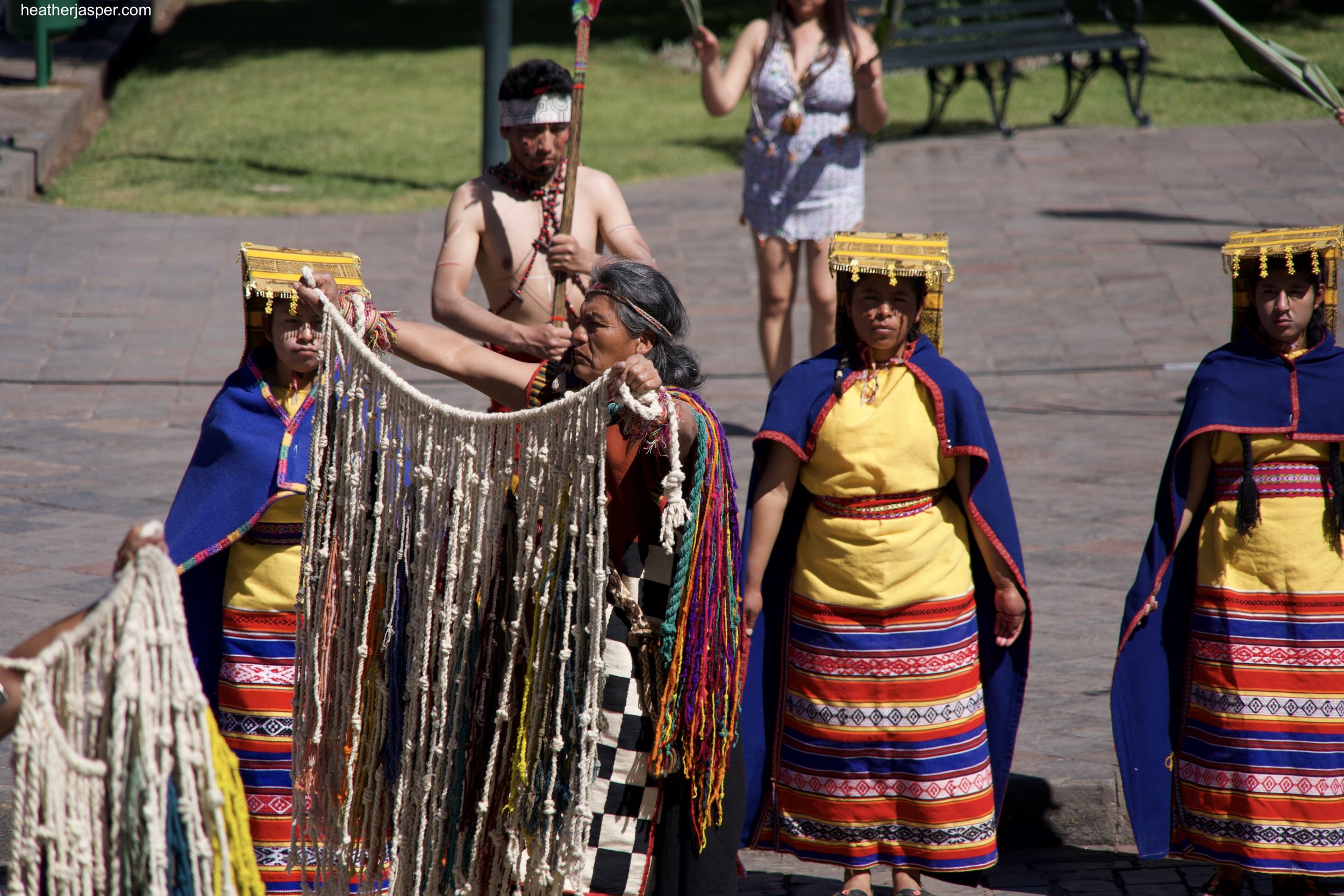
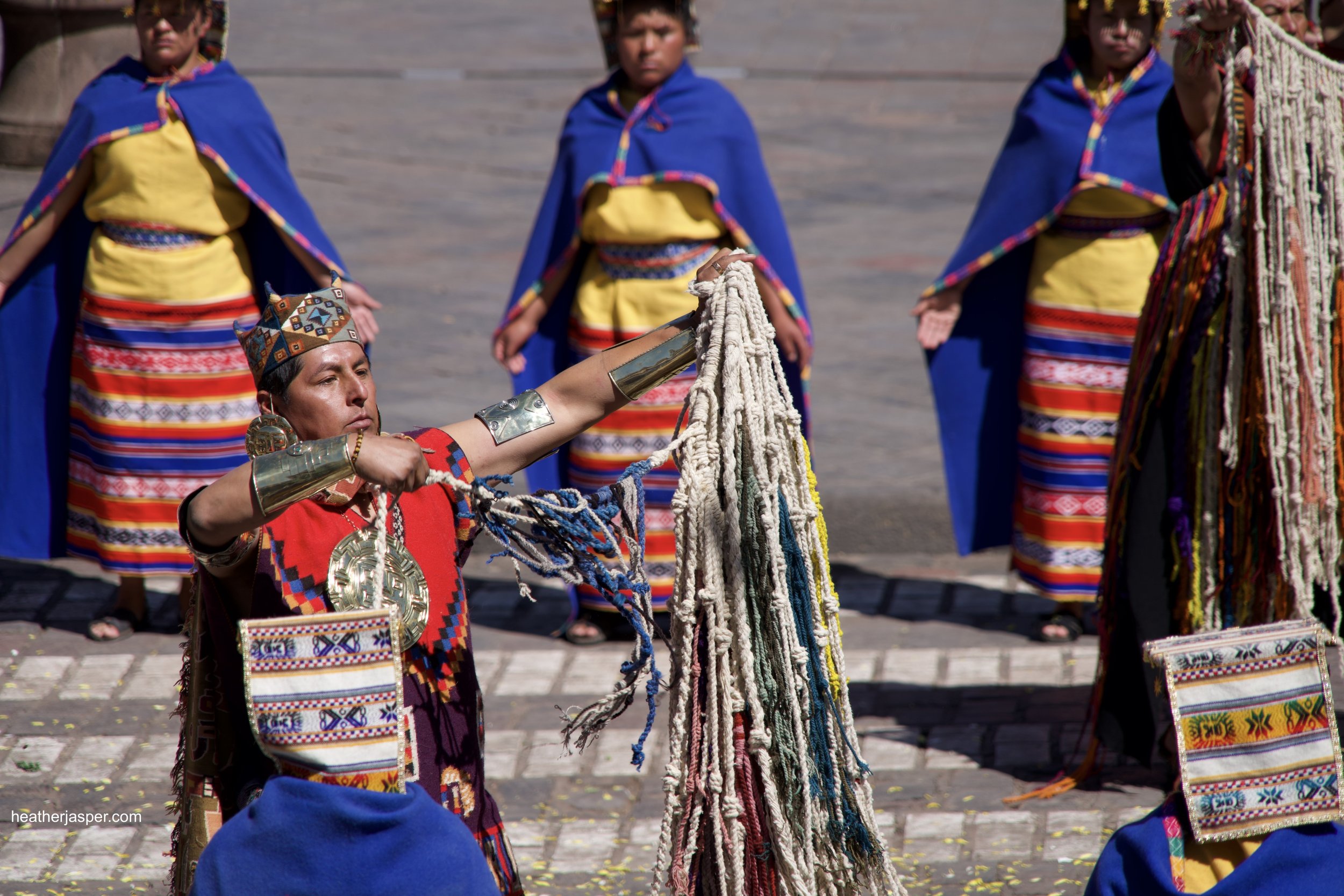
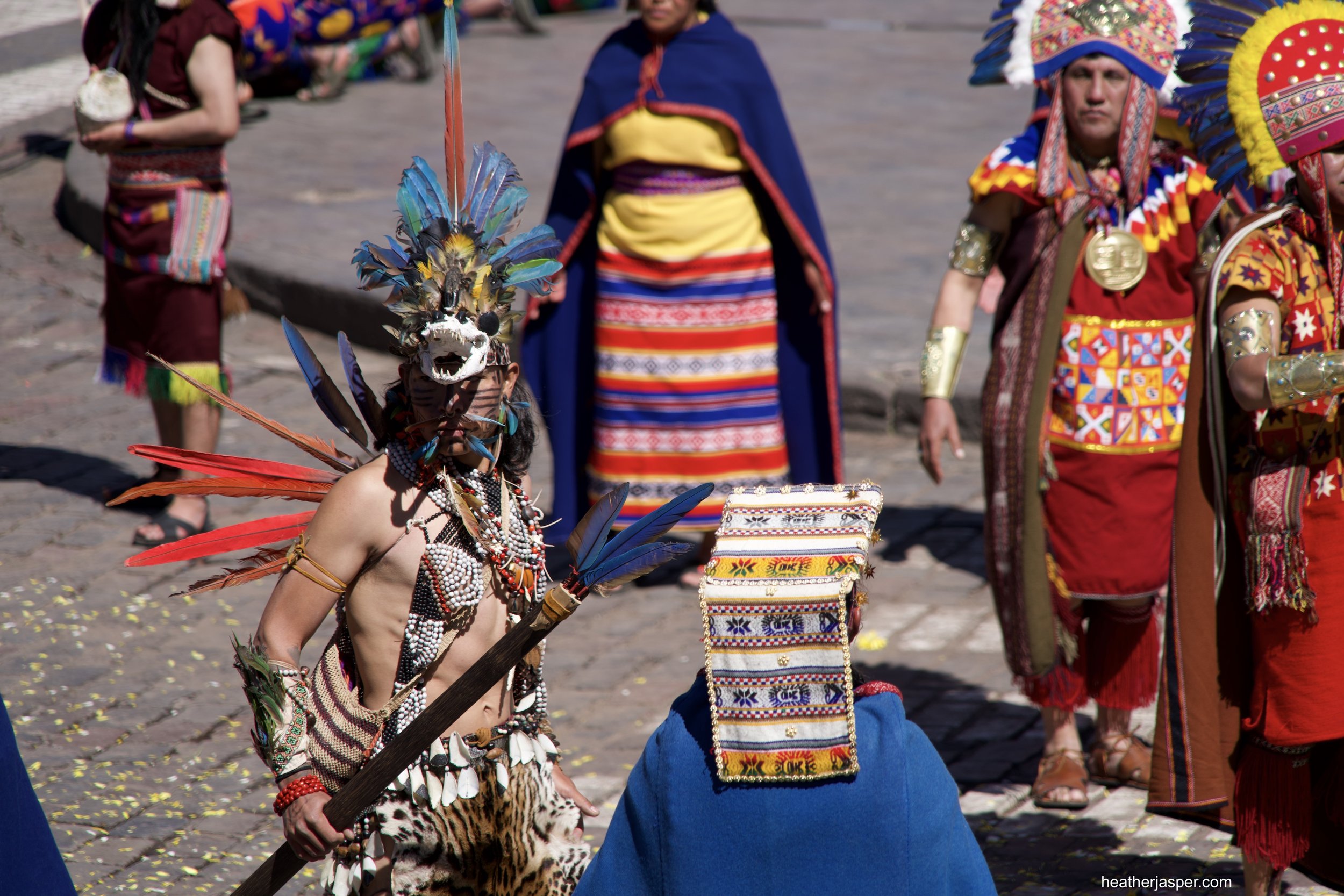
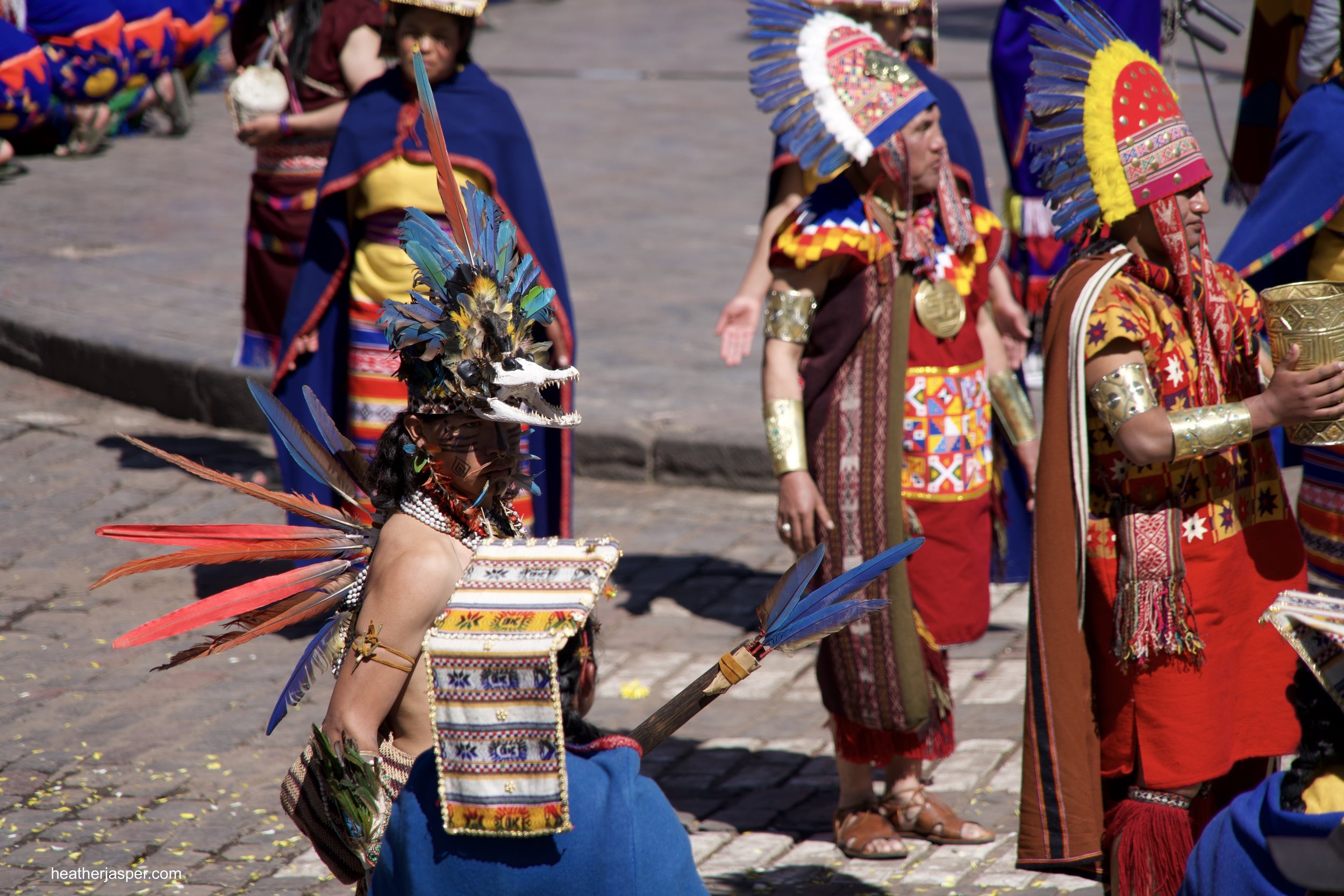
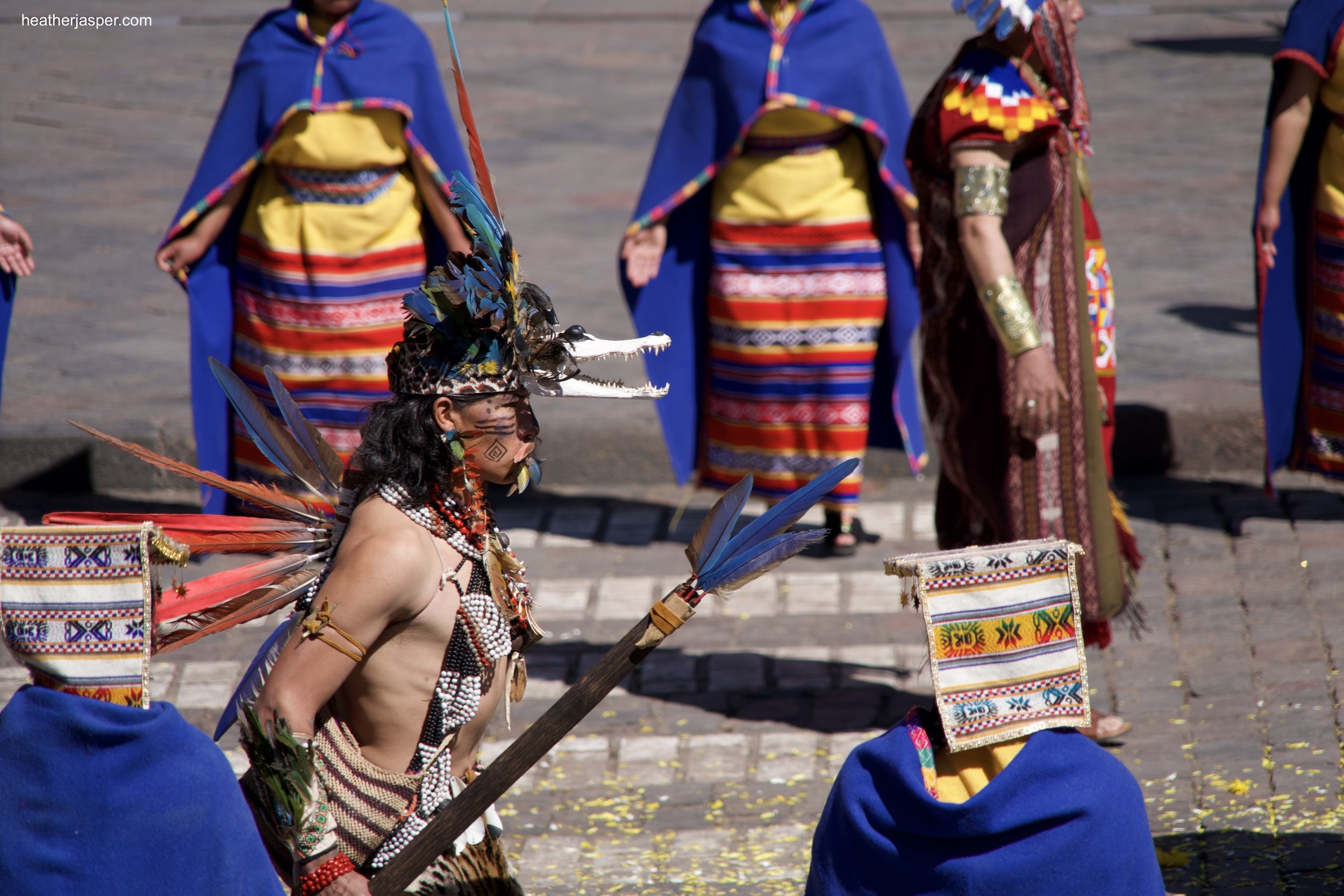

After the event at Qoricancha, the dancers file out, followed by the Inca.
They enter the plaza on a pedestrian passageway between a church (which used to be a temple) and the Santa Catalina monastery (which used to be the acllawasi).
The people sitting on either side of me, and on the steps below, were all from Cusco. They were all elderly and all as intent as I was on getting a good spot early. We chatted, bought tamales from passing vendors, held each other’s spots when one went to the bathroom and reminisced about past Inti Raymis. By the time the dancers started spilling into the plaza, I felt like I knew my neighbors pretty well.
The first to arrive are soldiers, representing the four corners of Tahuantinsuyo. In Quechua, Tahuantinsuyo means “the four corners” and it’s the Peruvian politically correct name for what English guidebooks generally call the Inca Empire. (Peruvian historians object to the word empire because the Andean political structure was so different from European or Asian empires and the Inca was not an emperor).
There are over a dozen groups that dance their way into the plaza, representing different Amazonian tribes, Andean cultures, and coastal peoples. Some have costumes that are very similar to what people in the Amazon or Andes still wear. Some costumes are designed from the drawings Spanish chroniclers made during the 1500s. Some are just creative costumes, like a new group in 2023 that wore robes made of moss and masks made of animal skins.
Chicha
Chicha is a drink of fermented corn, which was important for all Inca ceremonies and celebrations. It was brewed in clay pots like these.
New Characters
These actors didn’t dance or sing but their costumes were so cool I don’t think anybody noticed.
The costumes and the actors change frequently, sometimes every year. I liked the 2023 Inca actor and his costume more than the 2022 Inca, but I liked the 2022 Qoya and her costume better than this year. Overall, I thought the costumes this year were much better than 2022. (Check out my 2022 Inti Raymi blog here).
The action really gets started when the Qoya and Inca get carried into the plaza on their thrones.
The Inca’s throne is gold and the Qoya’s is silver. They’re paraded in front of the cathedral, then taken to the huaca that’s constructed every June in the center of the plaza. It covers a colonial-style fountain with fake Inca stonework, with only the golden statue of Pachacutec towering above the Inca.
The Incas
The actor playing Pachacutec walks on a framework of metal bars and plywood covered with plaster made to look like Inca stonework.
I like this more than the fountain and wish they would just replace it, rather than have this only in June.
The statue was added in 1991 on top of the fountain, which oddly was made in and donated by the city of New York. It was designed by the French JP Victor André and sent to Cusco in 1872. (The fountain’s story is complicated and very strange. This blog in Spanish gives more details).
When the Inca and Qoya are in place, all the dancers and actors sing a song in Quechua about venerating the sun. They lyrics were written in the 1940s and have some odd Catholic influence, in my opinion. “Powerful sun, our only father” and references to the Inca being the son of the sun, sounds too much to me like the Inca is Jesus. From everything else I’ve read about Inca culture and Andean beliefs, the Inca wasn’t the son of the sun. Maybe someday they’ll update the lyrics the way they update costumes.
The main event in the plaza is the Inca telling the Wilaq Uma (a kind of shaman) that he’s worried the ceremony at Sacsayhuamán (the 3rd part of the musical) won’t go well. The Wilaq Uma does a coca leaf reading and finds that everything will be fine. He gives the Inca a quintu, a set of three coca leaves, and they chew coca together. Then, everybody heads up to Sacsayhuamán, in the same order they arrived from the Qoricancha. The Inca and Qoya are paraded around the plaza while the soldiers and dancers are dancing their way out of the plaza.
If you don’t understand Quechua, or haven’t bought the booklet to follow along, the speeches are quite boring. Even though they have mics, you can’t hear what the Inca and other main characters are saying very well. It’s the dancing and singing before and after the Inca’s speech and coca leaf ceremony that are the most interesting.
Next year I’m going to get a spot earlier at Sacsayhuamán. I’ve gotten pretty good spots for both Qoricancha and Haukaypata now, but my photos from Sacsayhuamán last year weren’t great. Check back for another Inti Raymi blog in 2024!
If you want to see the Inca when he’s up on the huaca, you need to sit in front of the cathedral. However, if you just want a good view of everything, there are a few restaurants with balconies that work well. The three restaurants above are all facing the cathedral, so during the speaking part of the ceremony, you can’t see the Inca from there. However, that’s maybe only 5% of the overall time that the singing and dancing lasts. Especially if you don’t understand Quechua and don’t really care what the Inca or Wilaq Uma are saying, any of these three is great.


















